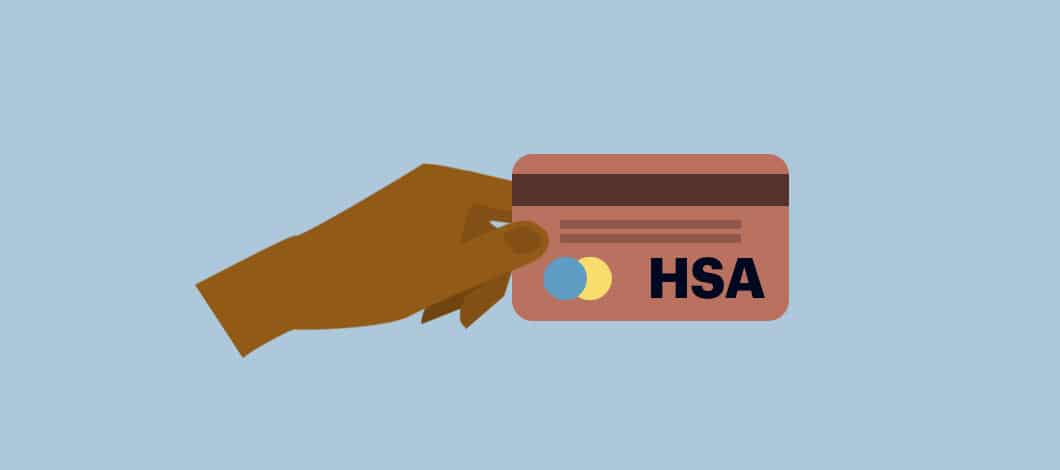Retirement options for the self-employed: The notion weighs on many small business owners. If you work for yourself, how do you save for retirement?
Here are retirement options for self-employed entrepreneurs and sole proprietors.
What Self-Employed Retirement Plans Are Available?
Options for retirement savings for self-employed business owners and sole proprietorship retirement plans fall into 5 main categories:
- One-participant 401(k) plans
- Individual retirement accounts (IRAs)
- Simplified Employee Pension (SEP) IRAs
- Savings Incentive Match Plan for Employees (SIMPLE) IRAs
- Defined benefit plans
In addition, health savings accounts (HSAs) aren’t technically retirement plans, but they can be used to save money for retirement.
One-Participant 401(k) Plans
401(k) plans, named after the section of the Internal Revenue Code which covers them, are one of the most familiar types of retirement plans for employees. They are available for self-employed business owners and sole proprietors as one-participant 401(k) plans, also known as solo 401(k) plans, solo-k plans, Uni-k plans and one-participant-k plans.
As the Internal Revenue Service (IRS) explains, with a standard 401(k) plan employees can contribute part of their wages to an individual retirement account, up to a designated limit, allowing them to defer payment of taxes on contributions and account earnings until distribution. Employers may elect to add funds to employee contributions as a benefit.
A one-participant 401(k) plan is simply a 401(k) plan that covers a business owner with no employees or the owner and their spouse. What is unique in this situation is the business owner is both employee and employer and can contribute to the fund in both capacities, making a one-participant 401(k) a type of self-employed pension plan. You can contribute both:
- Elective deferrals up to 100% of compensation (equivalent to earned income if you’re self-employed), up to an annual limit of $19,500 if you’re less than 50 and $26,000 if you’re 50 or more
- Employer nonelective contributions up to 25% of compensation as stipulated by the plan or up to an amount defined by a rate table for self-employed business owners
Note that contribution limits apply per individual, not per plan. This means that if you have another 401(k) with a second company you’re employed by, your contribution limit applies to the total contributions from both plans. If you have $250,000 or more in assets in your account at the end of the year, you must generally file an annual report on Form 5500-EZ. You may be exempt from this requirement if you have less than this in your account.
If you hire employees, your 401(k) plan must comply with the same rules which apply to 401(k) plans in general with respect to offering retirement benefits to qualified employees.
This Plan Is for Who?
One-participant 401(k) plans are for business owners who only need to cover themselves and their spouse. The ability to contribute as both employee and employer makes one-participant 401(k) plans more flexible than some other types of plans with respect to how much you can choose to put toward retirement.
This makes this type of plan useful for business owners who want to save a larger amount for retirement or who want to adjust how much they contribute based on fluctuations in their economic situation.

IRAs
An IRA is a tax-advantaged retirement fund where the account holder can save money for investment. It differs from a 401(k) plan in that all contributions come from the individual account holder, not an employer.
There are several types of IRAs. The most basic are:
- Traditional IRAs, where funds you invest aren’t taxed until you withdraw them
- Roth IRAs, where contributions are made after taxes and aren’t tax-deductible, but distributions are tax-free, with no tax on investment gains
Annual contribution limits for traditional and Roth IRAs are $6,000 for those under 50 and $7,000 for those 50 and older.
This Plan Is for Who?
Since IRA plans have low contribution limits, they are best used if you only need to save a modest amount for retirement. They can be useful if you have funds in a previous 401(k) plan from an employer you want to roll over into your IRA.
SEP IRAs
A SEP plan lets employers contribute to traditional IRAs set up in the names of employees instead of to retirement funds set up in the name of the company. This combines features of a traditional IRA with the employer-contributed aspect of a 401(k).
Businesses of any size, including those run by self-employed business owners, can use SEP IRAs. SEP contribution limits are set at 25% of employee compensation or $58,000 a year, whichever is lower.
This Plan Is for Who?
Designed to be simplified, SEPs are easy and inexpensive to operate, with no filing requirements. They allow employers to contribute a flexible amount, which can be helpful when cash flow is a concern. They have higher contribution limits than traditional and Roth IRAs.
The main potential drawback of SEPs is that only employers contribute, and must contribute an equal percentage for all eligible employees. However, if you’re a one-person business or you only have a few employees, this shouldn’t be an issue.
SIMPLE IRAs
SIMPLE IRAs allow employers to make matching contributions when employees contribute. A difference between a SEP IRA vs. a SIMPLE IRA is that with a SIMPLE IRA, employees and employers can both make contributions.
In general, businesses with up to 100 employees are eligible for SIMPLE IRAs. Employers who offer SIMPLE IRAs can’t have any other retirement plan.
SIMPLE IRA contribution limits for employees are $13,500 annually for those under 50, $16,500 for those 50 and older. Employers normally are required to make matching contributions up to 3% of the employee’s annual compensation but can choose to contribute a lower matching amount provided it is at least 1% and for no more than 2 out of 5 years.
Alternately, instead of making matching contributions, the employer can choose to make nonelective contributions equaling 2% of each eligible employee’s compensation for compensation up to $290,000. In this case, the employer must make contributions even if the employee doesn’t contribute.
This Plan Is for Who?
SIMPLE IRAs are easy and inexpensive to administer, with low start-up and operating costs and no filing requirements. They are useful for small businesses with up to 100 employees.
A downside of SIMPLE IRAs is that employers must make contributions. However, in contrast to a SEP IRA, you share the burden of contributions with employees.
Defined Benefit Plans
A defined benefit plan is so-called because it aims to provide a definite amount of distribution upon retirement. Businesses of all sizes can use defined benefit plans, and you can use other retirement plans with them.
Because defined benefit plans target a specific amount, they allow you to contribute more than other types of plans. Defined benefit plan limits can’t be greater than $230,000 or 100% of the account holder’s average compensation for their 3 highest consecutive calendar years.
This Plan Is for Who?
The biggest attractions of defined benefit plans are that they allow you to accumulate greater savings, you can save more quickly, your benefits are fixed and your distributions aren’t limited by your account’s asset returns. These advantages make defined benefit plans useful for high-income business owners who want to save a large amount for retirement.
On the con side, defined benefit plans are more complex and costly to administer than some other types of plans. An actuary must use a formula to calculate your funding levels. You must file an annual Form 5500 with a Schedule SB, which must be signed by your actuary. You must pay an excise tax if you contribute below your required minimum or above your maximum limit.

HSAs
As the Department of Health and Human Services explains on its HealthCare.gov website, an HSA lets you save untaxed income to pay for qualified medical costs, including deductibles, copayments, coinsurance and certain other expenses, but normally not premiums. You can elect to invest the money in your account so that it accumulates, with growth not subject to tax.
The IRS has set HSA contribution limits, including both employer and employee contributions, at $3,600 for individuals who have self-only coverage and $7,200 for individuals with family coverage. Limits are adjusted annually for inflation.
HSAs enjoy a triple tax advantage, making them even more efficient investment vehicles than most retirement plans. With HSAs:
- You can contribute from pre-tax payroll deductions, which lower your taxable income, or from post-tax income, which allows you to take a tax deduction on your income tax
- Any money you earn from investing your account isn’t taxed
- Withdrawals to pay for qualified medical expenses are tax-free.
While the primary purpose of HSAs is to save for medical expenses, they can bolster your retirement income in a number of ways. You can use funds in your HSA to pay for medical expenses in retirement so that you don’t have to cover them out of other resources. This can be particularly useful if you retire before you become eligible for Medicare at age 65. You can use HSA funds to pay for certain Medicare expenses. Once you reach 65, you can use HSA funds to pay for nonqualified medical expenses, although this will be subject to taxes.
Qualifying Restrictions
To contribute to an HSA, you must have a High Deductible Health Plan (HDHP), which is a type of plan covering preventive costs prior to deductibles. When choosing healthcare plans, you can look for a plan which is HSA-eligible.
Additionally, you can’t be claimed as a dependent by another taxpayer or enrolled in Medicare. You can continue contributing to an HSA until you enroll in Medicare, even if you stop working.
This Plan Is for Who?
The tax advantages of HSAs are their main appeal. One of their drawbacks is the requirement to maintain an HDHP, which can increase your out-of-pocket expenses. An HSA works best if you have the means to cover a high deductible.
To take maximum advantage of an HSA, make maximum contributions until retirement, and avoid spending funds before then. If you do spend funds, make sure you use them for qualified medical expenses.
What’s the Best Retirement Plan for Self-Employed Business Owners?
Which retirement plan is right for you depends on a number of factors:
- Do you already have a 401(k) from a prior employer you need to roll over?
- How much can you afford to save per month?
- What amount do you need for retirement?
- How close are you to retirement?
- What amount would you need to contribute to reach your retirement goals?
- How many employees do you have?
- How much administrative work are you willing to do to maintain your plan?
- What type of health insurance do you have?
- What type of health issues and expenses do you have?
- Would it be advantageous to use more than one retirement fund?
Selecting an option can be complex, particularly if you’re considering a plan with more customized features, such as one using an advanced investment strategy or a defined benefit plan. To make the best decision, consult a professional financial planner.
Start Saving for Your Retirement Today
A number of options for retirement accounts for self-employed business owners and sole proprietors are available. You can choose from one-participant 401(k) plans, traditional and Roth IRAs, SEP IRAs, SIMPLE IRAs and defined benefit plans. HSAs offer another vehicle to save for retirement.
Which option is best for you depends on factors such as whether you have a 401(k) plan from a prior employer and how many employees you have. Talk to a professional financial advisor to help you choose the option that’s best for you.










